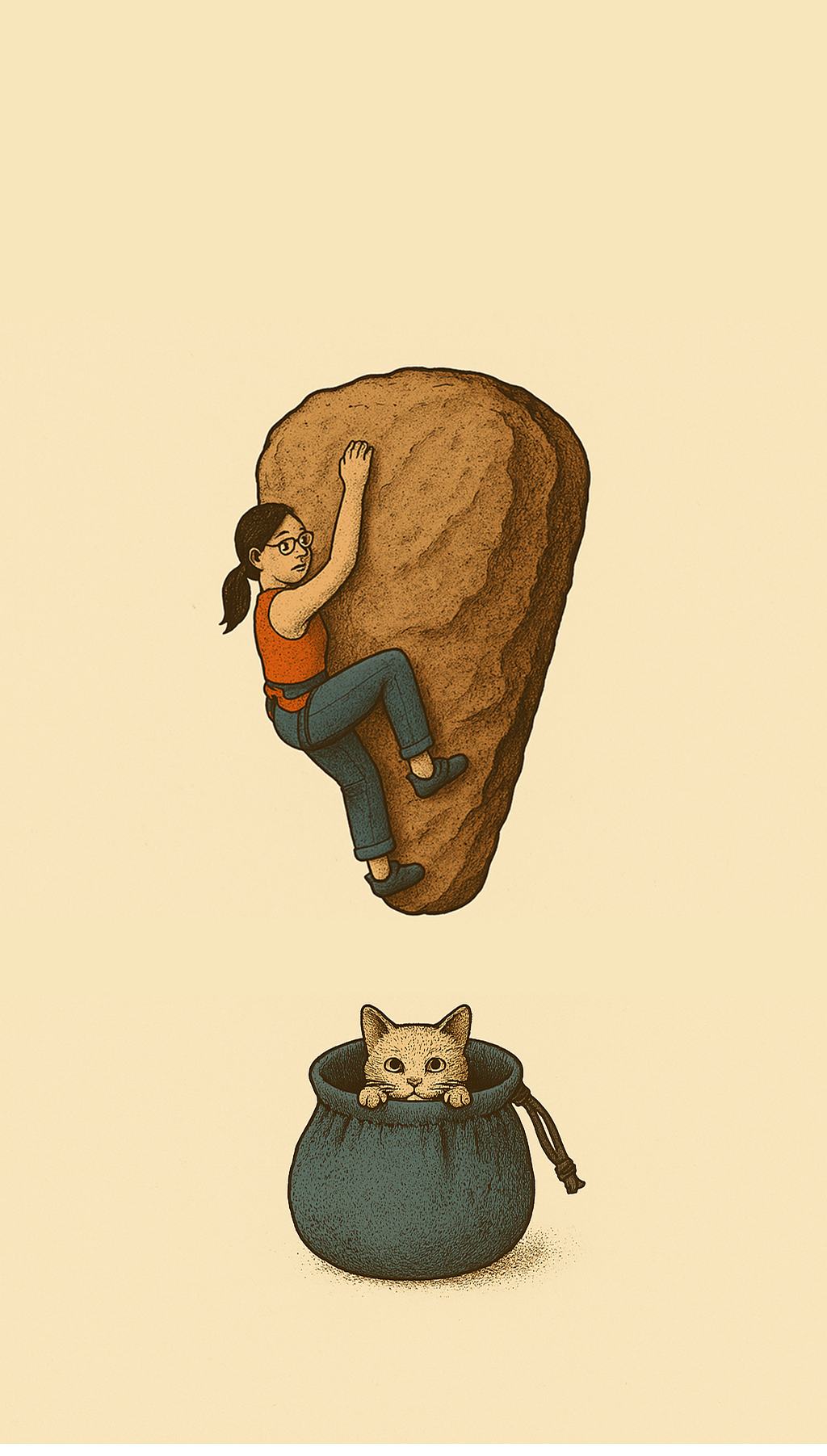Seeing as Momentum: Harnessing the Power of Visualisation to Generate Force
Context & Purpose
Climbers often hear the advice: “Visualise the end position.” But what does that really mean beyond imagining yourself grabbing the finish hold?
This drill unpacks that idea—turning visualisation itself into a source of force and momentum. It helps you practice the sequence where imagining the goal position actually elicits subtle preparatory movement in your body.
The aim is to stop forcing moves with top-down commands and instead let the visual goal itself set off the motion.
Essence of the Drill
This is not about commanding your hand to move.
It’s about observing how the visualisation of an end position primes or even unleashes movement, as if your body is responding automatically to an external cue.
It’s a structured form of motor imagery practice designed to:
Improve movement sequencing.
Train relaxed readiness.
Integrate perception and action.
Ground “mental rehearsal” in real, physical feedback.
What You Need
A paper towel or napkin, scrunched loosely into a small, lightweight ball.
Set-Up
Sit comfortably with your forearm supported if you like.
Hold the paper towel ball lightly in a relaxed, half-closed hand:
Thumb resting gently on the index finger.
Hand forming a soft “C” shape or hollow ball.
The paper towel is visible through the center.
Step 1: Externalise the Hand
Treat your hand as if it’s not part of you—but an object you can influence through seeing.
It isn’t for you to “control” directly, but for your vision to command.
Step 2: Visualise the Closed Position
Keep your hand softly open around the paper towel.
Superimpose in your mind’s eye a fully closed fist around the paper towel:
See the paper towel completely hidden.
Observe the skin folding, the fingers wrapping.
Hold that visualisation steady, almost like an isometric contraction—but in your mind.
Breathe steadily.
Key Practice:
Notice any micro-movements or subtle muscular priming in your real hand in reaction to that visualisation.
Don’t try to make anything happen.
Simply observe if the image alone cues your hand to close, tense, or adjust.
Step 3: Visualise the Open, Relaxed Position
Return your real hand to a loose, half-open shape.
Look at the paper towel.
Now overlay in your mind the image of it resting in a completely open, relaxed palm:
See every contour, wrinkle, and color of the towel.
Hold that mental image steady.
Breathe.
Again, simply observe any response. Is there a subtle release, spreading, or softening?
Step 4: Alternate and Explore
Repeat Steps 2 and 3 several times.
You can also switch hands or vary the grip shape.
Over time, aim to sense how vivid visualisation alone can prime physical change.
Optional Advanced Layer: Timing and Rhythm
You can begin to imagine transitions:
From open to closed.
From closed to open.
Use your breath as a metronome:
Inhale as the hand “closes” in your mind’s eye.
Exhale as it “opens.”
Feel the visualisation itself creating a sense of mental force or momentum that translates into physical readiness.
Personal Note on Variation
In my own practice, I sometimes experience my hand feeling like it is levitating, or moving up and down as if I’m watching a movie of it.
But this isn’t the goal of the drill.
It’s just one possible outcome that can happen when you’ve done a lot of sensory integration or interoceptive training.
If you don’t feel anything dramatic—or if it feels subtle or even frustrating—that’s completely normal.
The goal isn’t to “achieve” a particular sensation, but to observe how your system responds to the visual cue without forcing it.
It’s an exercise in noticing, not in performing.
Scientific Background (Plain Language)
What’s going on here?
Motor imagery research shows that visualising movement activates many of the same brain regions used for planning and executing real movement.
Our brains are wired to couple perception and action:
Seeing a goal can automatically prime the motor system to move toward it.
The visualisation acts like an external cue, reducing cognitive load and making motion more fluid.
Attention-driven priming means that when you focus on the end position, you can set off muscular adjustments even without conscious commands.
Climbing Application
This is the foundation behind “visualising the end hold” while projecting.
It trains you to react to what you see rather than overthinking or micromanaging.
It’s especially valuable for:
Dynamic moves and deadpoints.
Precision grabs where timing is critical.
Developing smoother movement sequences.
By practicing with such simple drills, you cultivate the ability to let seeing generate doing, creating more natural, effortless movement on the wall.
Key Takeaway
Don’t command the move.
See the move.
Train your body to respond to an externalised goal with minimal internal noise, turning mental images into motor plans with grace instead of force.
